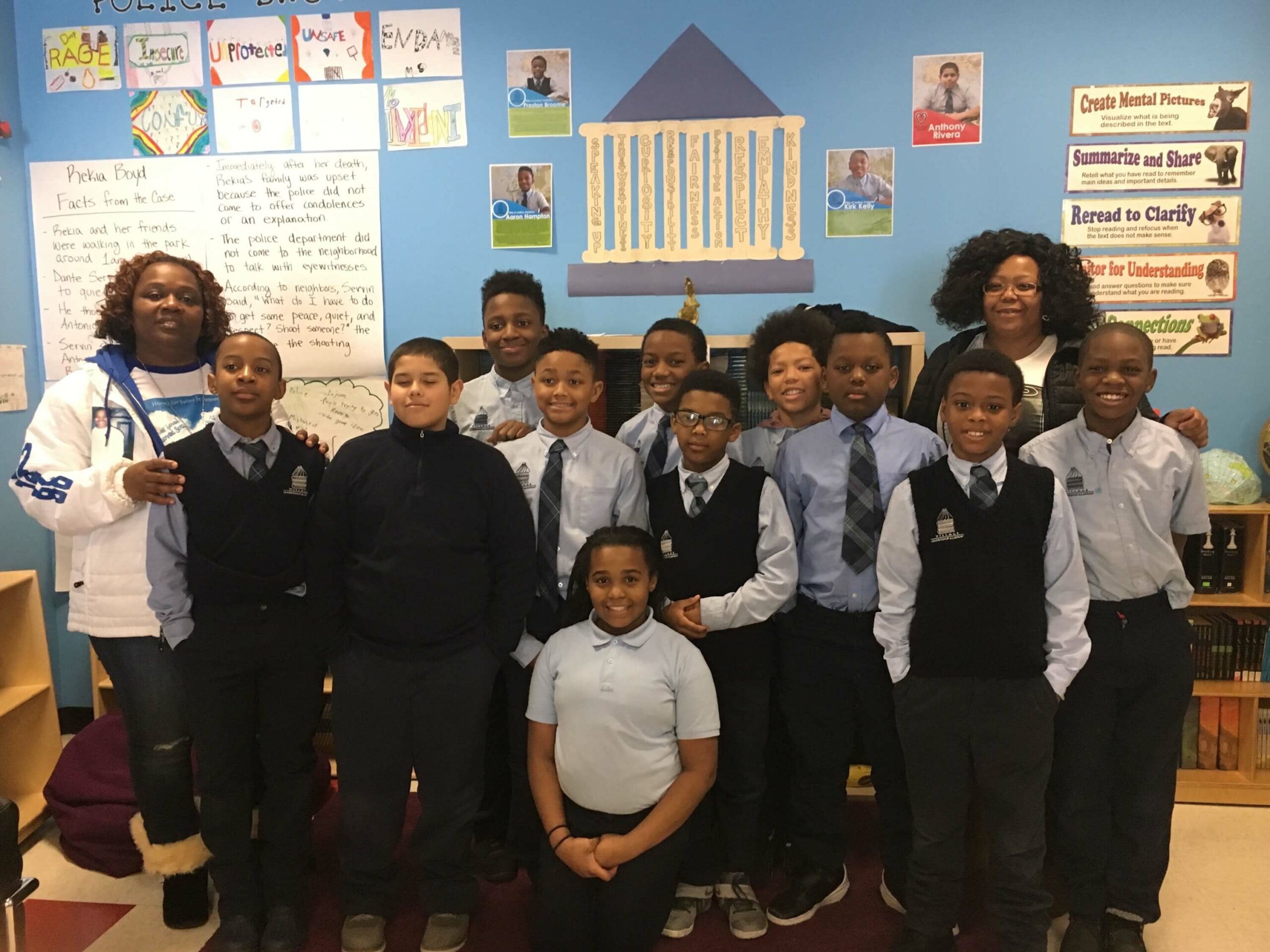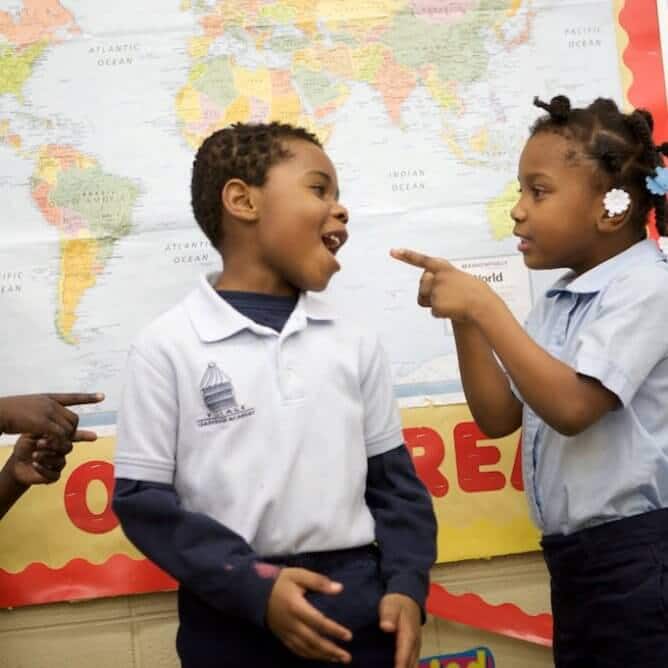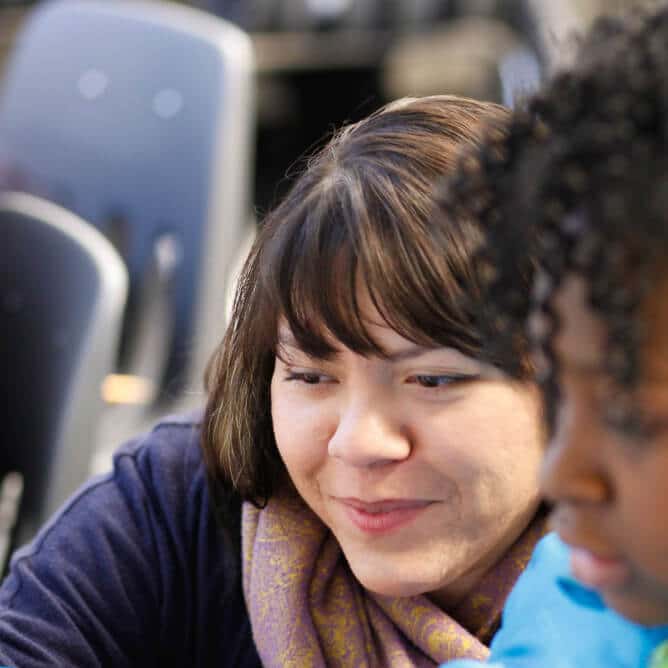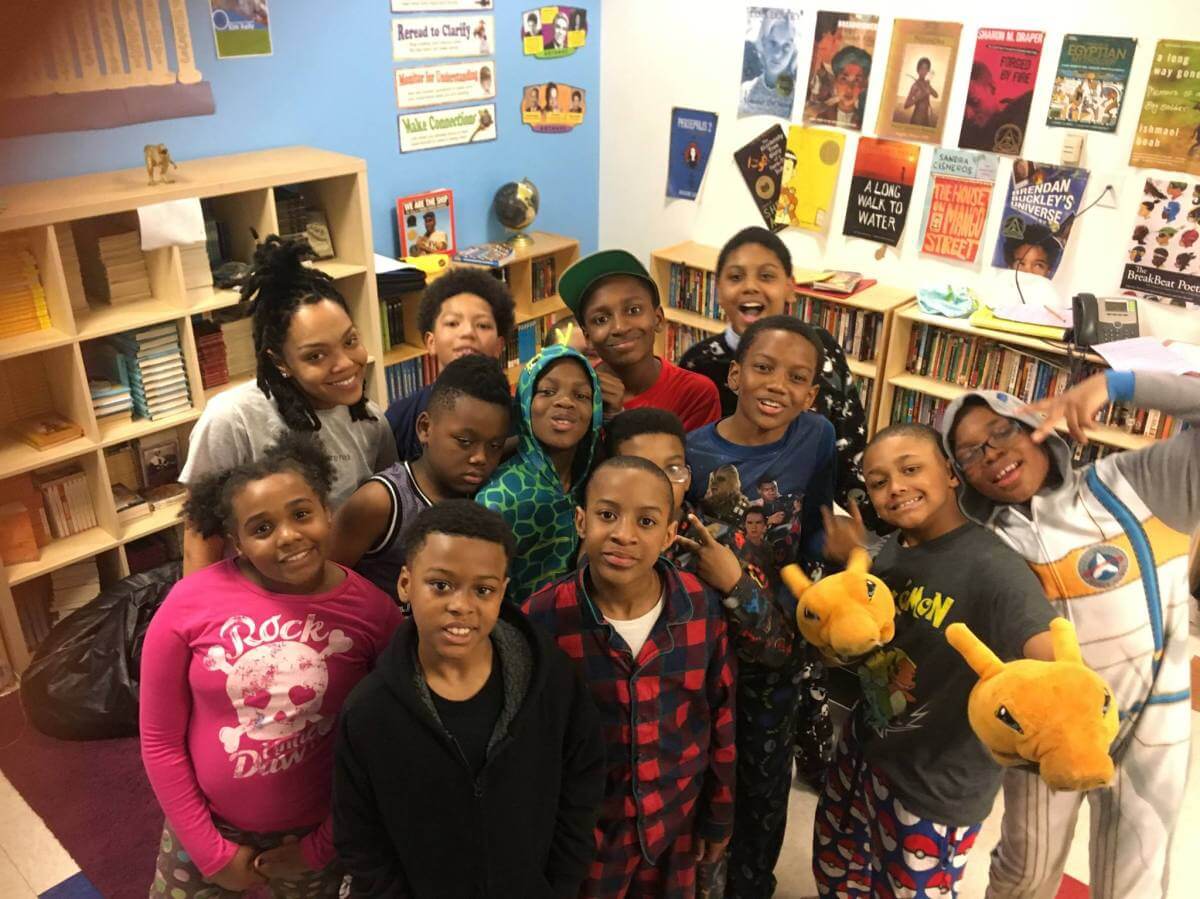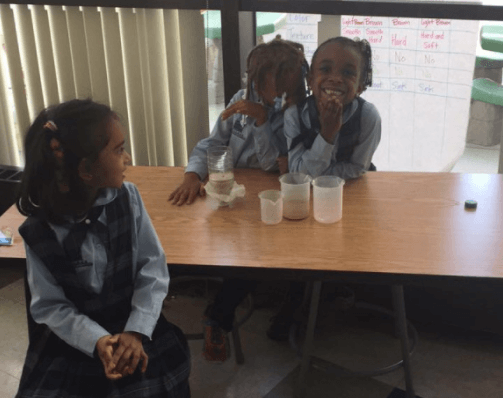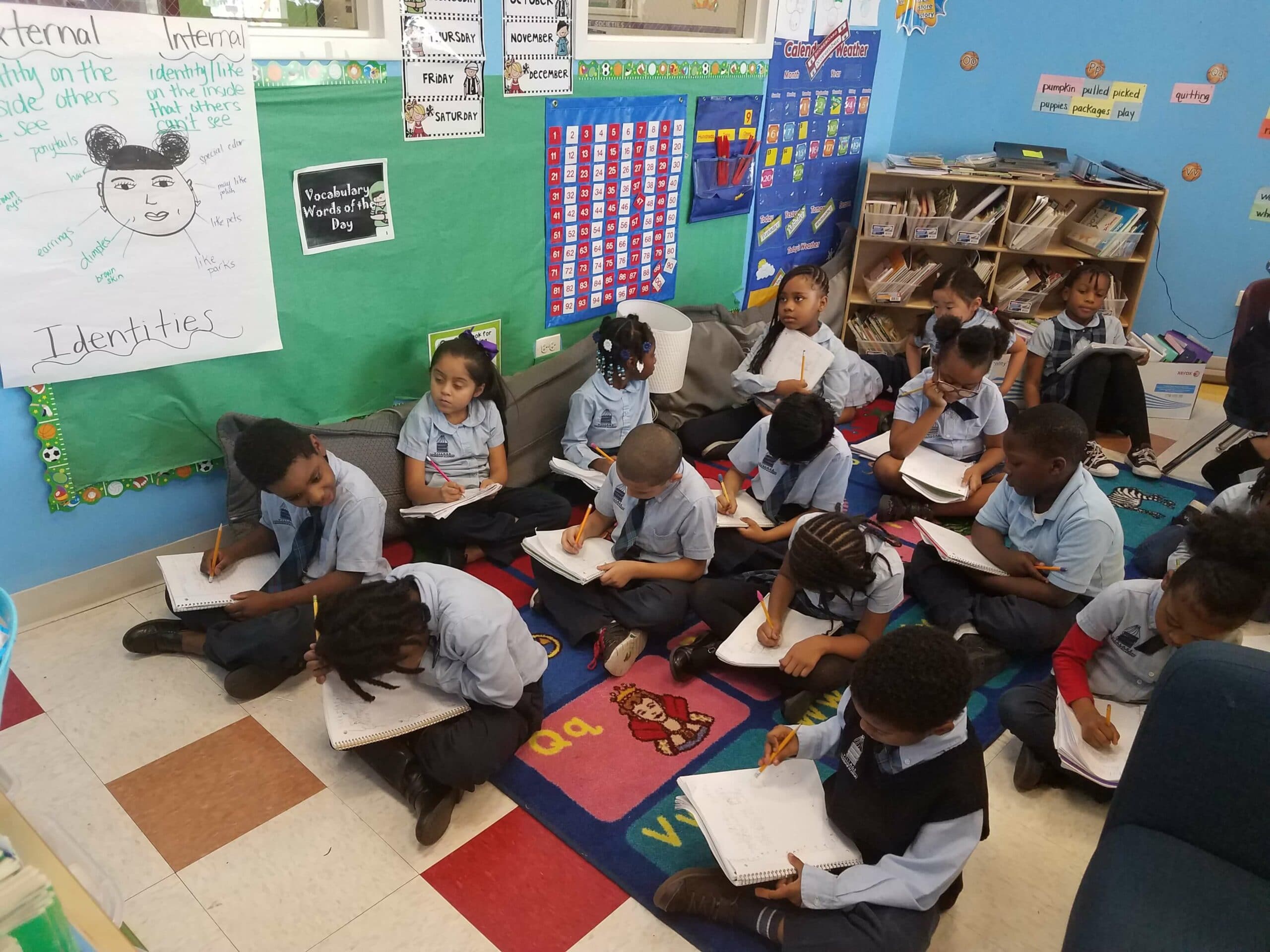Blog
Changing with Collaboration
By: VLA Instructional Coordinator, Maria Wahlstrom
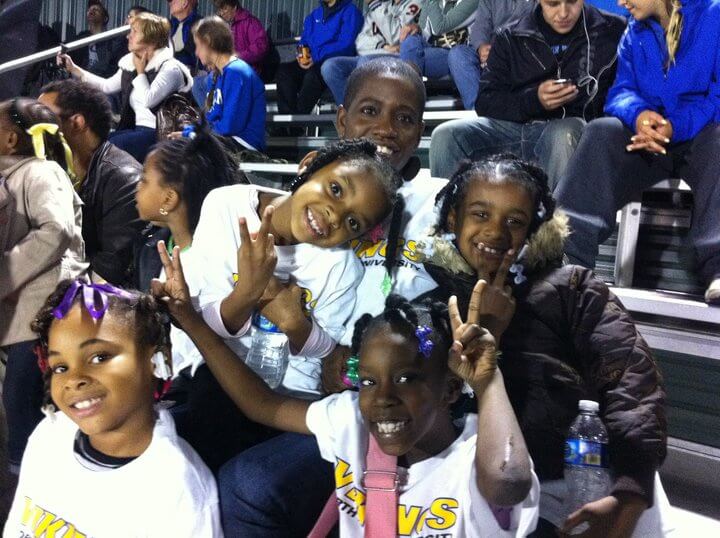
As I sat quietly in my chair next to Ms Ebacher (waiting for our meeting to begin), my eyes scanned the room and focused on the smiling faces of every staff member at our school. They were all engaged in an extremely loud conversations about their students, their lessons that succeeded and failed, the latest book they read in their class, and our latest ideas on social justice issues that we need to convey to our kids ASAP. These loud conversations scattered the room and transformed what used to be a French classroom into an amazing production of chaotic brilliance that is leading to the educational success of our students and the satisfaction of our teachers.
While absorbing this scene, I thought, “Man, if only the rest of the world could figure out how to do what we do: how to come together regardless of background and discuss and collaborate for one common cause.”
Our staff is a mixed demographic of African, African-American, Caucasian, Indian, Asian, Mixed Race, and Hispanic individuals, who grew up in different socioeconomic backgrounds. Embracing our unique backgrounds, ideas, and experiences, we collaborate everyday for one common goal: to superiorly educate our children in order to make this world better for them and through them.
We strive to achieve this goal at all times and in all subjects.
We realize that true educational successs cannot be achieved by the efforts of only one teacher or one administrator. It does not end in June and begin once again in September. Our goals cannot only be revisited at our weekly meeting times, and it should not be boxed into grade levels or subject categories. Rather, we realize that our goal can only be achieved when a group of intelligent and passionate educators intentionally share and discuss all of our ideas, criticisms, and talents (despite any differences) to make our school even better for the students all of us love.
As educators within a school family, we cannot soley focus on our own classrooms, our classroom culture, and our student achievement, without acknowledging the importance of school collaboration. In addition to improving our classrooms, we have to collectively focus on improving our educational institution as a whole, our school culture, and assure that each student achieves characteristically and academically (regardless of grade level). We can’t improve inner city education with a tunnel vision (i.e. “my students (in 4th grade) versus your students (in Kindergarten)”) because each student will eventually be affected by all teachers, not just one.
Therefore, to guarentee true student success, our staff understands that each teacher and administrator must take the responsibility to support and assist one another in the process of improving our teaching skills and educating our children for the rest of their primary and secondary schooling.
As I was reflecting on all of this, I realized that the brilliance of our school is grounded in the way our teachers and administrators focus on collectively educating all students in all ways (academically, socially, artistically, personally, critically, ect…), whether or not their names are on our assigned roster. We share an aim to improve our school by building close relationships with our students and with each other and by seeking feedback from everyone involved. Together, we aim to think about more ways we can teach our kids how to think versus what to think, and we influence each other’s objectives. At VLA, teachers and the principal are constantly visiting each other’s classrooms during preps and after school hours to exchange ideas, emotional support, and even resources. Administrators listen to daily challenges in lessons and give ideas to help teachers explain challenging objectives or better manage challenging behavior. In return, teachers give ideas to administrators to help the school run more smoothly.
Each staff tries to know each student’s name and shows concern on each child’s academic and personal development. We are a school where all our staff members talk about our school often: in meetings, in the hallways, in each other’s classrooms, over meals, over text messages, and even in each other’s homes. We collaborate on lesson plans, guided reading techniques, math instruction techniques, and management. If a teacher stumbles across a great book, she immediately passes it to all the other teachers, so that every student in the school could have an opportunity to hear the story too.
We operate like an intertwining system of ideas that challenges one another to get things done. Yes, we are loud, but each one of our ideas, concerns, and student insights continues to be heard and recognized. Endless collaboration from everyone is how all schools should ultimately operate.
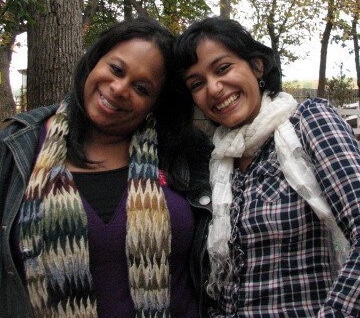
In fact, collaboration not only helps better educate our students, but it is also a huge step towards teacher satisfaction. How can any school succeed in teacher retention when teachers feel that they are not emotionally supported, when their ideas are not heard, and when they are not appreciated or genuinely respected for their efforts? Teaching is a very challenging profession, and until one does it themselves, it will be hard for anyone to fully understand the planning, art, science, and emotional and mental investment that superior education mandates. We need to recognize this by helping each other and holding each other accountable as educators.
We need to learn from each other’s mistakes and share possible solutions. Both educating a child and satisfying teachers requires a constant interaction and communication amongst all teachers, parents, and administrators. Therefore, we cannot be a school where teachers just go to their classrooms and leave at the end of the day in isolation with their struggles. We also can’t be a school where administrators just sit at their desk with their office doors closed. At VLA, we keep all doors open to one another. Our teachers and administrators are constantly talking, supporting, collaborating their ideas, and taking responsibility for various school tasks that will enhance our service to our children and their families.
In a world where there is a great need for change, we need to concentrate on the common goals that we all share, rather than soley concentrate on the differences of our backgrounds or ideas. We cannot change things by operating in isolation. Every school, every teacher, and every parent of course wants a good education for our children. Yes, we have different ideas of what this should look like, but until we talk and challenge one another, we wont make much improvement in reaching our goals. We can’t change education (or even the world) by ourselves: we need a group of people (even if it is small) who believe in change and have different ideas and think critically on how to make this change happen.
We need to learn from these people, collaborate with these people, and look beyond superficial differences to get the job done. Learning from, discussing, and critically challenging different ideas will actually be far more productive than isolating ideas from discussions. Most importantly, we need to share any of our successes so that we enjoy the process of fulfilling our passions in spite of inevitable challenges.

In order to teach our kids social justice (such as changing things and appreciating differences), we need to model this in our staff interactions. We need to operate in the same way we want our children to operate in the face of challenges: we need to learn from each other, think critically, and work together to make change. Just like in our crazy meetings, we need to think hard, talk loudly, and smile at it all…together.
Enroll Now
Discover a partner in the future of your child. Enroll your scholar for the 2021-2022 school year today!
